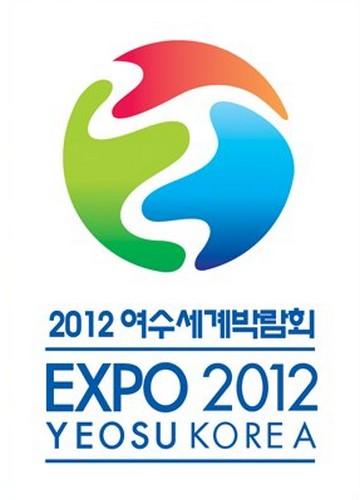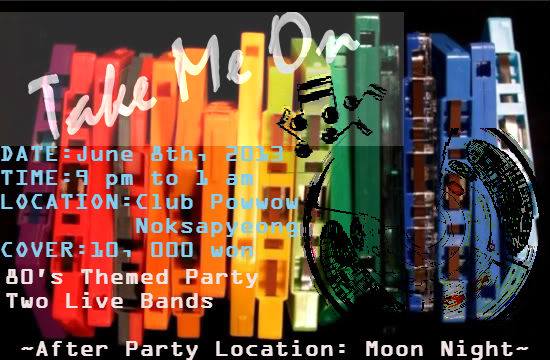Growing up, the international exposure at Epcot was exciting: a dozen countries from all corners of the globe hosted park visitors for some uniquely ethnic experiences presented by people passionate about their home country.
For the most part Korea has been able to pacify the Korean demand for a theme park with Everland, Lotte World, and Seoul Land (and better so when Universal Studios opens in 2016). but the multiculturalism and exposure to foreign countries that comes from an Epoct-style park has also just been filled with the 2012 Yeosu World Expo.
A short, four hour car ride due south will land you west of Busan in the archipelago region of Jeonnam Province. During the day it’s a very scenic drive with bridges, hill covered islands, and waterways filled with fisherman. But after arriving at 4 am, there was little to do but sleep. The decision was to find the Expo, park nearby, and sleep in the car.
A thousand sleeping posistions and a sweaty night’s sleep later, it was morning and time for breakfast. McDonald gluttons be forewarned there is no McDonald’s breakfast in Yeosu. The only francise of the Golden Arches in Yeosu is in the E-mart, and only serves It’s dinner menu.
Filled with Shanghai Spice Chicken Burgers and Coke at nine thirty am, four employees of Maple Bear Academy were ready for the expo. Parking wasn’t easy it took a good fifteen minutes of aggressive driving and an inexplicably keen sense of direction before the car was parked and the day trip to Yeosu could begin.
In an effort to solicit more foreign patrons. the price of a ticket for anyone who even looked foreign was ten thousand won , without even being verified. Korean looking foreigners were asked to present their alien registration card to get the same discount.
Once through the main gate visitors are greeted by the expansive international pavillion. It’s an impressive building, spanning four interconnected sections with a design similar to Singapore’s Marina Bay Sands (meant to give the illusion you are under a giant wave). Taking also from foreign architectural marvels, there is a large LCD screen that spans the entire length of the roof, down the centre of the pavillion, similar to Fremont Street in Las Vegas.
Any research into “must dos” for the Yeosu World Expo would yeield the same act-like-a-bik-again-style acitivity. Under the Internaoional Pavilion and throughout the park Yeosu Expo Passports can be purchased, and stmaped at the various pavilions. And they certainly do their jo y motivating visitors to explore each of the over forty pavilions on offer, and by inciting “friendly” competition between co-workers.
The Yeosu Expo differs from Epcot in that all the pavilions have a similar theme: “the Living Ocean and Coast: Diversity of Resources and Sustainable Development”. Admittedly, it wasn’t a very exciting theme, but some pavilions did it very well.
Kazakhstan was certainly the favoured pavilion, with a cool entrance, an excting 3-D fly-through of Kazakhstan’s major cities, and an unbelievable presentation including a traditional instrumental performance, traditional dancers, and a traditional song. Across was Belgium, which had many cultural exhibitions, but most importantly a bar/restaruant serving Belgium Waffles and Stella Artois. On the hour, there were modern tango performances at Agentina’s pavilion that was unbelievably exciting. Sweden was a personal favourite, filled with cultural goods for sale, that’s-news-to-me educaitonl posters, and furniture than can only have come from IKEA. While Sweden’s nordic brother, Norway, wowed visitors with a fly-over tour of the country’s entire coast-fjords and all.
By the end of the day the passports weren’t even half-full. Queues to enter the pavilions, which had capacity limits, were sometimes thirty minutes or more. Germany, Swtizerland, and Angola had enormous lines that were determined too long to wait in. The short lines at the lesser-known national pavilions meant beign able to learn more about places thatr were once relatively unknown; such as, Turkmenistan, Sri Lanka, and Oman.
To finish off the day, there was a light and water show. Before the show began, probably half of the 103 contries represented had ethnic food available through the park. Despite International options, the odds-on favourite was anything Asian, which meant lines at the Spanish, Turkish, and German food pavilions were short.
The park-job-in-the-sky from earlier in the day allowed for both a unique palce to watch the light and water show from outside the park and a unique advantage to getting out of the city before everyone else. and advantegeous it was.
The whole trip was quite exciting. While the World Expo has certainly lost its international appeal since the extravagant days of the 1889 Paris World exp (read: Eiffel Tower), the 1958 Brussels World Expo (read: Atomium) or the 1967 Montreal World expo (read: Biosphere); there were still many things to be learnt.



